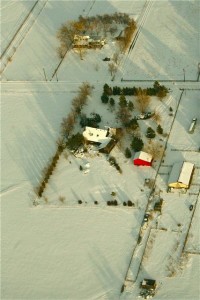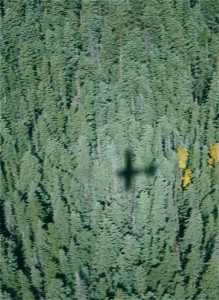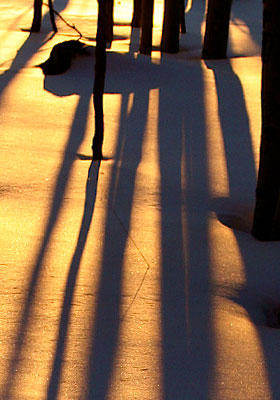Archive for the ‘conscious evolution’ Category
Friday, June 22nd, 2012
I’ve been away from blogging for awhile, and I’m aware that it’s partly because I suspected I might just be whistling in the wind. Even though I get some nice comments from people, I don’t have a great deal of evidence that a lot of people read my blog.
Which brings up the question, what does a creative endeavor mean if no one is receiving it? Or another way to put it is, what does a creative endeavor mean to the artist if there is no evident feedback? This has been a dilemma for artists of all media for millenia.
I’m really not complaining, because my ego got stroked big time recently when my book, Flying Lessons: How to Be the Pilot of Your Own Life, received a gold medal IPPY (Independent and small press publishers) award in the self-help category. I have to say, that felt really good! And, many readers are telling me how much the book means to them, and even buying copies for friends and family.
In reflecting on the boost this award and reader responses have given me, I’m wondering what role outer feedback plays in our success. I’m musing now on flying lesson #5, Communicate with the Controllers. In this case, the controllers would be the audience, or buyers or critics who give the artist feedback on the “worth” of her creation.
Should those opinions define us and be the bottom line measurement of our creative ability? I sure hope not, since there are books on the best seller list at this moment whose literary value I would question, for sure. And, there are some fabulous songs out there that aren’t being played on the radio.
But we can’t honestly discount feedback, either. Even when we’ve evolved beyond acting out of ego into a desire to serve, the audience counts. What “controls” the creative artist is a mix of his inner drive and desires and the way in which the world receives his offerings.
It’s the same, I suspect, whether we are mothering, making lattes or selling large scale paintings in a gallery. The motivation comes from inside. And, if the creative person is not “seen” by others, it’s easy for the spirit behind the work to wane.
Hopefully, these two forces work together. The woman I can’t forget, who used to work at the Starbuck’s in my local market, is someone who added to my life. Her smile, her humor, her energy came from a place within her that clearly desires to connect and enrich others’ lives. That spirit motivated me, of course, to buy more drinks from her and to emulate her way of being with others. A win/win.
And so, armed with my gold medal and nourished by that positive feedback, I’m back to blogging. I look forward to trying to serve you some nourishment that will quench your spiritual thirst, make you think, urge you to smile, perhaps bring a tear to your eye, and bring out that spirit within you that longs to create and connect.

Tags: consciousness, creativity and empowerment, Flying Lessons: How to Be the Pilot of Your Own Life, Flying metaphor, Pamela Hale
Posted in aviation, bringing out your gifts, coaching, conscious evolution, Creativity, creativity and empowerment, Flying, happiness, seeing oneself, self image, shifting how we see | No Comments »
Sunday, March 18th, 2012

I remember flying along this gorgeous coastline in Baja, Mexico, with my husband Jon. It was before I got my pilot’s license, and so when he urged me to stop photographing and take the controls, I got instant butterflies. 95% of me wanted to fly, but the 5% that was terrified had the capability of ruining everything.
This makes me think of the beginning of my career, when I was a classroom teacher worried about maintaining discipline. Even on days when I had 95% of the class involved and focused, I was always afraid of that 5% that might take those controls away from me.
If “flying” is a metaphor for the 95% of us that knows how to break free of gravity and soar, we still have to learn to deal with the 5% that suspects we might crash at any moment. I call this “communicating with the controllers,” which is Lesson 5 in my book, Flying Lessons.
The challenge of this lesson is dealing with negative feedback. That might include the kind of inner voice I heard when my husband urged me to take the controls and I was afraid I couldn’t do it. Or, it might be outer feedback, like the kind I would get from disruptive students.
I would submit that our reaction to both kinds is fear: fear of the fear we feel, or fear that we will not be able to stay in control. Or fear that we were incapable all along; thinking we were was just a lie. And fear can hijack a good intent, a calm mind, an open heart and a good experience.
The lesson I learned from Clio, my flight instructor, was about discernment. Which voices are telling the truth that will keep you safe and set you free? And where is your true voice, which you need to use when standing up for yourself is the answer.
Here’s a summary of Clio’s advice:
1. Be kind. The 5% may be afraid. Fear can make them (whether they are outer or inner voices) say terrible things. Take that into consideration.
2. Be fair. Remember, they are the 5%. Are you listening to the 95%, or are they just invisible, their hands folded politely on their desks, their voices muffled behind their modest smiles…What if you asked them to raise their voices in song?
3. Ask for help. Ask your partner, your friend, your angels, your guides, your God, whomever you trust the most for help. For listening. For caring. For hugs. For company. The 95% of the controllers are trying to help you survive.
4. Keep the whole journey in mind. Remember, it’s this part that is hard. The big picture journey probably has a much more beautiful arc to it.
5. Remember, everything is relative. You sometimes think the world is coming to an end. When yours looks like that, so does the larger one. Still, there are those other times when all is glowing, when the leaves of every tree are on fire with sunlight, and when the moon is huge and white and all-knowing. When life is holy. When you are perfect, just as you are.
Tags: consciousness, Flying, Flying metaphor, inner peace, living today, managing fear, perception, Photography, Self, spiritual practice, ups and downs
Posted in aviation, bringing out your gifts, children as teachers, coaching, conscious evolution, consciousness, creativity and empowerment, Flying, happiness, healing, loving ourselves, nature as mirror, nourishing ourselves, Photography, seeing oneself, self image, self-healing, shifting how we see, shifting paradigms, spiritual practices, Tools for seeing ourselves | 2 Comments »
Sunday, February 26th, 2012
“The soul-bird is waiting inside. Even if you have locked it in a cage, it is waiting to fly.”
from Flying Lesson #4

Lesson #4 contains a key moment, when you as a participant in the story, or the coaching or the retreat process, realize that there is indeed a soul-bird inside you who is longing to fly, and who was born to fly and knows how.
Next you realize that as a normal human, you have protected this soul-bird by building a cage around it, and have spent a lot of life strengthening and polishing the cage. At some point you may have forgotten that you actually ARE the soul-bird. You may have forgotten to the degree that you thought you were the cage.
But, no blame. This was just a mistake, not anything unchangeable. You’re right on time. It was just part of your development to concentrate on the cage. Now you are called to do and be something different.
Here’s the good news: Since you constructed the cage, you are the one who can open the door.
Now is the moment of choice.
Can you trust that little soul-bird to do what it came here to do? What adventure will it embark on when it spreads its wings?
This is what you’ve longed to do and be.
Open the door.
Tags: consciousness, Flying, Flying metaphor, Nature and the soul, perception, Photography, soul
Posted in aviation, Being, bringing out your gifts, coaching, conscious evolution, consciousness, creative imagination, creativity and empowerment, Flying, Guided imagery, loving ourselves, new life, nourishing ourselves, Photography, returning to essence, seeing oneself, self-healing, shifting how we see, shifting paradigms, Tools for seeing ourselves, Uncategorized | No Comments »
Tuesday, January 24th, 2012

Sometimes I cringe when I meet someone who asks me what I do. Answering either “life coach” or certainly “energy medicine practitioner” or for sure, “shamanic practitioner” can lead to immediate Eyes Glazing Over Syndrome.
Sometimes I do better when I tell a client story, but the best approach is asking questions. Like, “Have you ever had the feeling that something is missing in your life, even if you’ve read a lot of books, had therapy or tried meditating?” (At this point, I am checking for “Woo Woo, Checking Out Now Syndrome.)
But I persist. “Do you ever feel confused about your purpose? Or feel that your passion for your life has gone flat?”
Even though such complaints are vague, most of us have experienced them. Someone who says “Absolutely not” would probably not want life coaching or any personal development enrichment.
In reality, we have all experienced feelings that some might call burnout, and others might describe as being out of balance. Even someone who has never quite found that path, that center, usually can recognize these symptoms. The vocabulary isn’t important. And so…what?
I would call the feeling of being in our center, on our path, feeling passion and purpose “the pilot’s seat.” And I would say that the one who has taken the pilot’s seat in such moments must be the essential self. The one who is all about our life force, or soul.
Sometimes the essential self manages to take the pilot’s seat “by accident,” or really without our effort. In those moments we might call grace, we simply know and we simply are.
When you’ve been there, it’s painful to be dislodged from the pilot’s seat, or to have it commandeered by sub-personalities, or by the ego, who is not well-connected to essence.
Sometimes just the awareness of being off-center is enough to correct the situation. Other times, we need help. We need tools. Here are some to consider:
- Deep talk, soul sharing with a friend or advisor who listens well
- Traveling into invisible realms for guidance, through meditation, prayer, dreams or shamanic journeying—or my Sand Spirits Insight Cards!
- Any breathwork or meditation system that leads you back into your heart
- Asking the Great Mystery for help
- Work with changing old beliefs and releasing old patterns
If any of this resonates with you, I invite you to call me for a complementary phone consultation. Or if this has helped you remember your own tools, please add your comment!
Tags: Being, centering, centering techniques, consciousness, Essence, Flying, Flying metaphor, inner landscape, living today, managing change, meditation, perception, Photography, Sand Spirit Insight Cards, spiritual practice
Posted in bringing out your gifts, centering techniques, coaching, conscious evolution, consciousness, Dreams, Flying, happiness, healing, Imagination, inner landscape, meditation, mindfulness, Photography, returning to essence, Sand Spirit Insight Cards, seeing oneself, self-healing, shifting how we see, shifting paradigms, spiritual practices, Tools for seeing ourselves | No Comments »
Thursday, January 12th, 2012

The world needs your genius. You have genius, you know. Every one of us does. Your genius is your “original medicine,” as Angeles Arrien put it. It is unique medicine. So if you keep it from the world, the world will never see it again.
Taking the pilot’s seat means bringing out your genius. It means remembering what Marianne Williamson reminded the world about our greatest fear: that we are really great. Playing small, she reminded us, serves no one.
When we ask the biggest part of us—the oldest, most essential, wisest part of us—to be pilot of our lives, we invite our genius to be seen and to be at work in our lives.
It’s strange, isn’t it, that this invitation seems to require courage from us. How could raising the level of our performance and bringing out our greatness be a fearsome thing? Who is it who says it’s scary?
I think it is the child within, the egoic one who is afraid of being exposed, afraid of attack, afraid of shame, failure, and afraid its worse suspicions about our real nature will be proven right. But what does the one within you who is capable of observing this voice say about those arguments?
My larger voice—my essential self—says they are illusions. She says they are the energy of fear incarnate. And not the kind of fear that serves as a valid warning. The kind of fear that cripples.
And so, if there is an inner wrestling match about who should climb into the pilot’s seat and run our lives, how do we deal with this small, fearful one who would sabotage our authentic power? I think we just name her. And then recognize her need for comfort. Hold her as we would any child. Let her know this is not her decision. Let her know we will not leave her behind.
And then, as therapist Terry Real says, peel her sticky fingers off the flight controls, move her over to the passenger seat, and climb in and begin flying.
There’s no time to do otherwise. The world needs your essential self right now.
Tags: consciousness, Essence, Flying, Flying metaphor, perception, Photography
Posted in authenticity, aviation, Being, bringing out your gifts, calling, conscious evolution, consciousness, creativity and empowerment, Flying, inner landscape, loving ourselves, Photography, returning to essence, seeing oneself, self image, self-healing, shifting how we see, shifting paradigms, Tools for seeing ourselves, women's empowerment | No Comments »
Tuesday, January 3rd, 2012

When I walk on the beautiful land in the Sutherland Valley, beneath the Catalina Mountains, the land reminds me that Mother Earth has a heartbeat, a rhythm. Being in nature attunes my body to her rhythm and reminds me of my own natural pace. So does meditation—it is a way of stopping to check in with the Source, and with my own body/mind, and re-calibrating.
I need to change my “attitude,”—an aviation term for the angle of the airplane– to pull the nose of my airplane up a bit and slow my speed.
When I think of the idea of slowing my pace, my “small mind” immediately panics at the thought. What will I miss? What will I not accomplish?
Fortunately my “larger mind” responds by asking, “Where are you going so fast? What is your destination or goal that is so crucial? Isn’t the journey the point?”
My small mind says nothing.
I remember Thich Nhat Hahn’s cautions about our pace, his advice about mindful walking and mindful eating and avoiding multi-tasking.
My small mind points out how many things I accomplish by multi-tasking. Is that really true? Recent research points out that our brains don’t operate at maximum efficiency when we do more than one thing at a time. Maybe we are sacrificing focus, intensity and depth of thought, excellence in problem-solving.
Perhaps I suffer from the aviator’s dreaded plague, “get-there-itis,” the disease that leads to unwise decisions like flying too late, or into bad weather, or when sick, or in conditions outside our expertise. If we crash, we might ask ourselves what was so important about that destination and how much time we really saved.
If I take time to gaze out the window, perhaps I’ll really see something like the scene in the photo of the water and cloud formations along the Sea of Cortez. What’s the hurry, really?
These are thoughts each of us must bring to consciousness as we pilot our way through a year that may challenge us to drop old patterns, to take responsibility for our own energy, to ask treasured family and friends to support us as responsible pilots who have taken the left seat. We may not be able to manage the strong winds of life, but we can manage ourselves.
What are your thoughts? Interact with us at Facebook.com/FlyingLessons!
Tags: Being, consciousness, Flying, Flying metaphor, inner peace, living today, managing change, meditation, musings, Nature and the soul, new life, own pace, Photography, spiritual practice, The Beauty Way
Posted in aviation, Being, coaching, conscious evolution, consciousness, Flying, happiness, healing, health, inner landscape, loving ourselves, managing change, meditation, mindfulness, new life, not doing, nourishing ourselves, Photography, returning to essence, seeing oneself, self-healing, shifting how we see, shifting paradigms, spiritual practices, The Beauty Path, Tools for seeing ourselves | No Comments »
Sunday, December 18th, 2011

Holidays, despite the fun and joy and lights, can exacerbate the tensions within and between us. People are tired and expectations are high. Sometimes scenes we imagined would be warm and close present unexpected tension. When that happens, it can feel like our feet are stuck in the sand. Hard to move out of the situation or through it with much grace.
The old way would be to try to power through it. Summon the adrenaline. Fight back. Use mental or even physical force. We know where this has led in our personal and corporate lives–to wars of private and global dimensions. Surely it’s the season to something other than digging ourselves deeper.
In my new book, Flying Lessons: How to Be the Pilot of Your Own Life, I made the suggestion that we “rise to the occasion” by elevating our consciousness and finding a new, higher form of power.
Here are some practical suggestions, just in case you get a chance to practice! If you are triggered by someone and tempted to act out of the old kind of power, here’s an alternative formula:
1. Stop.
2. Breathe.
3. Call on your inner observer.
4. Ask that observer what the highest good could come out of this situation.
5. Ask how you might contribute to the highest good.
6. Review your options.
7. Make your powerful decision and then act from that place.
Now, how does the landscape look? Even that sand that once entrapped your feet might form lovely patterns from your position as the observer who can rise above the “gravity” of the challenge.
May you find true peace in your own heart during this holy season.
Tags: centering techniques, consciousness, Flying, Flying metaphor, inner landscape, inner peace, managing change, Photography, spiritual practice
Posted in aviation, conscious evolution, consciousness, Flying, inner landscape, managing change, nature as mirror, Photography, seeing oneself, shifting how we see, shifting paradigms, spiritual practices, Tools for seeing ourselves, Uncategorized | No Comments »
Tuesday, December 13th, 2011

Just because you are reading this, I think you deserve congratulations for taking the time to read something just for you! No matter what your holiday traditions, this is a busy time!
Which is why I ended up reading my own Flying Lesson #2 over again. It’s Bring Enough Fuel for the Journey. Here are some excerpts and thoughts that struck me all over again as good advice for the season:
It’s food for thought that even though there’s no excuse for running out of fuel in the aviation world, we consider running on empty a normal part of our culture. In some circles there’s even a sort of nobility attached to being such a hard worker that everyone knows you never sleep. Even when people refer to someone as being a workaholic, rarely do they shake their heads in sadness or suggest a good treatment center. In many cases, overworking and overdoing is considered the means to success.
But when we have the ambition to fly, to rise above the gravity of our current situation, self-care becomes a crucial function. If we are going to push the envelope and move into a lofty territory where humans have only dreamed of operating we’ll have to pay attention to everything we’re doing and be conscious.
Being conscious is what piloting our lives is all about. And the proof of the pudding (especially the Christmas pudding) is how well we manage our own energy.
Have you ever stopped in the midst of rushing around to listen to a small voice saying something like, “What AM I DOING?”
This is the same voice who might ask other wise questions, like:
- How about a 15-20 minute power nap?
- What if I just took a hot bath instead of…
- Is the food I’m about to eat truly my premium fuel?
- What if I went to bed at 9 tonight?
- Do I really want to go to that party?
- Is this conversation nourishing me?
Never running out of fuel is about taking 100% responsibility for not burning out, not depleting yourself, and for knowing and cultivating the kinds of premium fuel that truly give you energy. Who else will do this for you?
Hmmm, maybe Santa. On the other hand, why not put this present right in the center of your being this minute:
Peace.
Joy.
Freedom to manage your own energy.
May you find the generous heart within that wants to give you these gifts this season.
In love and light,
Pam
Tags: consciousness, Flying, Flying metaphor, holidays, inner landscape, inner peace, living today, managing change, managing energy, managing stress, musings, new life, perception, Photography, spiritual practice, The Beauty Way, winter
Posted in aviation, conscious evolution, consciousness, creativity and empowerment, Flying, health, inner landscape, loving ourselves, new life, nourishing ourselves, Photography, seeing oneself, self-healing, shifting how we see, shifting paradigms, spiritual practices, Tools for seeing ourselves | No Comments »
Monday, December 5th, 2011

How do we pace ourselves during this holiday season so that we can “fly” through busy schedules, family relationships, celebrations and sometimes travel? After all, the body doesn’t know the difference between “good” and “bad” stress. What it does note is an imbalance.
To fly a plane, a pilot has to master the controls of four forces of flight that act on the airplane: thrust, drag, lift and gravity. The engine can provide the thrust, and power also provides lift. But we don’t want to overdo it, either in the air or on our holiday rounds.
If it’s all thrust, we’ll burn out our fuel and be too speedy to be in control. If we let drag take over, we won’t have the speed we need to fly. Lift is wonderful, but getting too “high” isn’t always wise. Gravity, on the other hand, can bring a body down too quickly, whether it’s made of metal or flesh.
Piloting is the art and science of managing our energy so that our vehicle–whether it has wings or not–can operate with the most ease and efficiency possible. After all, that’s what it was made to do.
Here are some tips for managing your energy so you can soar through this season:
1. Use your mental “dipstick” to mentally measure the energy you have every day, on a scale of 1-10.
2. Decide what your personal minimum should be.
3. How and when will you pause to re-fuel? Schedule breaks.
4. What is your premium fuel? Is it solitude? Prayer? Family? Nature? What have you learned about this?
5. Discipline yourself. Does that seem dreary? It won’t if it means you get through the holidays with your well-being and cheer intact.
6. Joy is the key word for this time of year, but sometimes it’s hard to come by. Track your joy. Pursue it. Treasure it. Give it. It’s good for you!
Tags: consciousness, Flying, Flying metaphor, living today, managing change, perception, Photography, spiritual practice, winter
Posted in aviation, coaching, conscious evolution, consciousness, Flying, happiness, healing, health, nourishing ourselves, Photography, seeing oneself, self-healing, shifting paradigms, spiritual practices, Tools for seeing ourselves, Uncategorized | No Comments »
Saturday, October 2nd, 2010

I see a funny figure in this Sand Spirit image– a dog or weasel standing on two legs,with its head in profile, looking to the left and showing us a huge black left eye. Do you see this? Its body has a stone at the waist or midpoint and another one near the feet. This seems to be a very grounded figure to me–one who sees and feels in its body and has its feet on the ground in a solid way. I think when I speak with this figure, what it says will make sense.
And how do I come up with what I see in this abstract photograph that began by being an abstract, natural arrangement of stones and streaks in the sand? How do you come up with whatever you see?
I see this way just by opening my active imagination, by using my intuition and my right brain, that non-linear, non-logical way of knowing. This way of seeing is called by some people “second sight.” Another way to look at it is that it’s our 6th sense. Our “common sense.”
What we see through the inner eye is just as valid as what we see with the outer one. And sometimes, even when we’re confused by what we see with the outer eye, the inner one makes sense.
When we are told, “Oh, that’s just your imagination,” one response might be, “What do you mean by just?” Why denegrate the inner eye? It has been responsible for everything creative in the human-made world. Our vision is the beginning of actions we call genius. Without seeing it first inside, we wouldn’t do much.
What are you going to do as soon as you finish reading this? Imagine doing it. See the inner movie? Doesn’t that happen all the time? You run a quick version of what you’re planning through the inner eye, and then you “see” how to go about it.
Now that is just common sense.
What do you think? I welcome your comments!
Tags: consciousness, creative imagination, Imagination, living today, musings, perception, Sand Spirit Insight Cards
Posted in conscious evolution, consciousness, creative imagination, Creativity, creativity and empowerment, Imagination, inner landscape, nature as mirror, Photography, Sand Spirit Insight Cards, seeing oneself, shifting how we see, shifting paradigms, Tools for seeing ourselves | No Comments »










